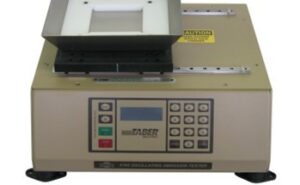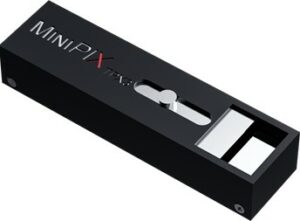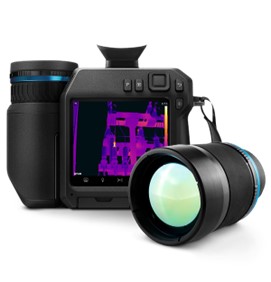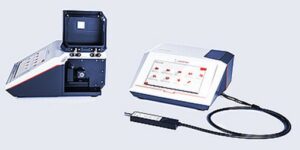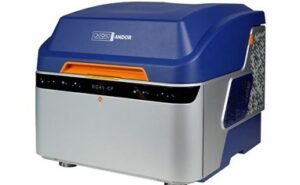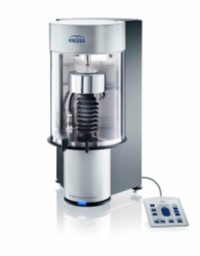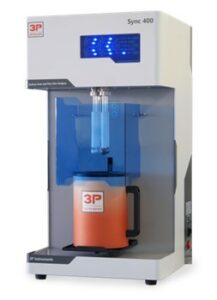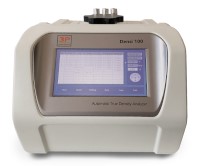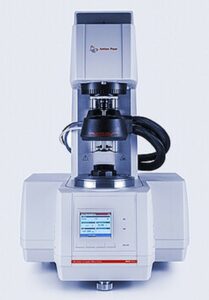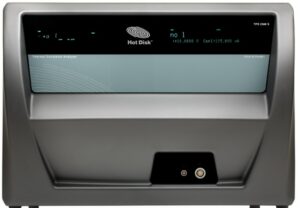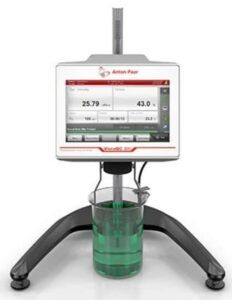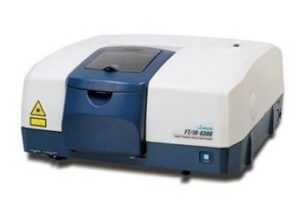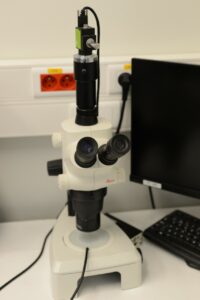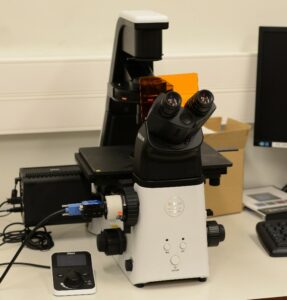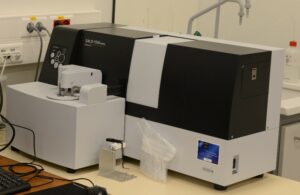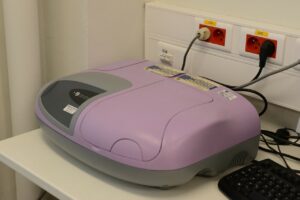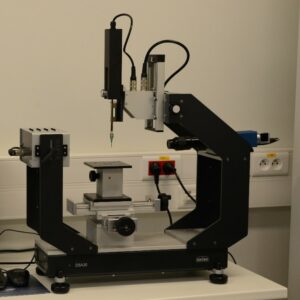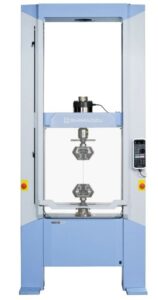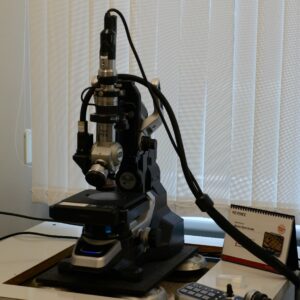
In the last ten years, space organisations globally, along with new market players, have made it easier to access space for scientific and technological research. This movement towards making space more accessible has attracted a broader spectrum of scientists who were previously unaware of the possibilities for conducting experiments in space. This growing group includes experts from various fields such as biology, physiology, pharmaceutical chemistry, fluid physics, soft matter, and thermodynamics, although this list is far from complete.
However, many researchers from this broadened community may not completely grasp the intricate requirements for setting up and carrying out space experiments. CRESTLAB has been established to provide an extensive research platform to assist both academic and industrial sectors in designing, preparing, and performing benchmark experiments on Earth, which can then be modified for different space environments—whether it be in microgravity, lunar or Martian gravity, or hyper gravity.
CRESTLAB is structured around four specialized laboratories—Life Sciences, Material Sciences, Physical Sciences, and Data Science—along with two technical workshops. These facilities boast advanced instruments and support services that cover all phases of space experiment planning, from the initial engineering design and breadboard construction to early testing and data analysis.
Along with the technical support offered by our experts at CREST, here is a list of some major equipment available at CRESTLAB to help design space experiments:
Equipment
Brand: TABER
Description: The TABER® Oscillating Abrasion Tester – Model 6160 is best known as an “oscillating sand tester”. Described in ASTM F735 (Standard Test Method for Abrasion Resistance of Transparent Plastics and Coatings Using the Oscillating Sand Method), the oscillating sand tester is used to measure the relative abrasion resistance of a material to surface abrasion and / or marring. The primary application of the Oscillating Sand Abrasion Tester is for transparent materials and coatings utilized in windows and lenses, but it might also be used to evaluate organic paints & coatings, plastics, metals and other materials.
Abradants
- Reference abradant in ASTM F735 in a quartz silica sand, graded 6/9. Besides the silica abrasive media, other potential abradants include alumina (zirconia), silicon carbide, aluminum oxide and glass bead. For repeatable test results, the sizing and shape of the abradant is absolutely critical.
- During testing, the abradant may become ‘worn’ as the sharp edges contact the specimen and other abrasive particles. To ensure reproducibility, new abrasive media should be used for each test. It is also recommended that the abrasive be replaced after 300 cycles for longer cycle tests.
Evaluation
- Using a haze meter, the haze and light transmission of a transparent test specimen is measured and recorded. After subjecting the specimen to the specified number of abrasion cycles, the results are measured as a change in haze and light transmission. Abrasion resistance for opaque materials is measured visually or by weight loss.
Brand: Teledyne Flir
Description: High-Performance Thermal Camera with Viewfinder. The FLIR T840 infrared camera is designed to help thermography professionals. Thanks to an integrated eyepiece viewfinder and a bright 4-inch color LCD display, the T840 makes it easy to conduct inspections outside in bright, challenging light conditions. Pair the T840 with a FLIR FlexView™ dual field of view lens for the convenience to instantly switch from wide-area to telephoto scanning. A 6° telephoto lens option is also available to ensure accurate temperature measurement of small targets from farther distances
Brand: ANTON PAAR
Description: Cora 5001 is a Raman analyzer for the quick and reliable identification of substances based on their chemical fingerprint, or for the monitoring of chemical changes. Choose the Fiber model for flexible analysis outside the instrument via a probe or the Direct model which analyzes samples in a closed compartment and is certified as laser class 1 – for ultra-safe use. The guided analysis procedure means Cora 5001 is suitable for operation with only minimal training. The small footprint and battery option make these benchtop Raman instruments versatile tools for analytical tasks in-house or in the field. Excitation Dual Wavelenght: 532 nm and 785nm.
Brand: ANDOR
Description: Andor BC 43 Benchtop Confocal Microscope. Including 2x objective and joystick for motorized sample positioning. Equipped with: Brightfield and Differential Phase Contrast transmitted white light illumination, widefield epifluorescence for low-light imaging and patented Borealis™-illuminated multipoint confocal for fast high-contrast 2D & 3D imaging. Includes built-in vibration management, dual function Focus Seek and Lock™. Excitation lines 405nm, 488nm, 561nm & 638nm, and emission filters for commonly used fluorophores such as DAPI, GFP, mCherry, CY5. 4.1 MP (6.5µm pixel, 16-bit) sCMOS camera up to 82% QE. 18.4 mm field of view. Workstation: 10 Core, 18M Cache, 2.8GHz up to 4.9GHz; 64GB RAM; 512GB SSD Boot drive; 8GB Graphics card, 2TB Data storage; Windows 10 operating system. Software: Fusion BC43 acquisition software for multi-dimensional experiments in 2D, 3D, time series, multi-field, multi-well and large area montage with image stitching. Renders 3D images in real-time as a volume. Includes ClearView GPU™ for enhanced resolution images with reduced sample background. Imaris Quant for high-quality snapshots, movie creation, isosurface reconstructions, 2D point-to-point measurement and Imaris Arena for image management.
Lens 10x and 20x
Brand: KRUSS
Description: The Bubble Pressure Tensiometer – BP100 measures dynamic surface tension with high accuracy. It reliably analyzes the mobility of surfactants, thus enabling high-speed processes such as spraying, coating, printing, and cleaning to be optimized. The instrument covers a wide speed range as part of a single, fully automatic measuring process. This enables you to find out how quickly a surfactant acts and when the required surface tension has been reached. In this way, the BP100 assists in the development, selection, and dosing of surfactants optimized for your process.
Brand: 3P Instruments
Description: The 3P densi is a compact and automated density analyzer for powders and solids as well as for the characterization of foamed materials. By use of these pycnometers, the sample gets filled in the sample cell; sample preparation takes place in continuous or pulsed gas flow or optionally under vacuum. The rinsing, measurement and possible repeat measurement are operated automatically. Repeat measurements optionally are effected either by presetting a user specified tolerance (auto-stop) or a user specified number of runs.
Brand: ANTON PAAR
Description: Fast one-hand coupling and decoupling of measuring geometries in just one second – operating temperatures (-160 °C to 1000 °C)
Precisely measure even low-viscosity samples with high sensitivity (from 7.5 nNm to 2 nNm). Stable results even for long-term measurements with low torque: include thermal management trimming mirror for a 360° view of the sample with no blind spots, which avoids sample preparation errors and leads to highly reproducible results.
Detection of any sample behavior change , Reproducible duration of each measuring point down to 1 ms
Full pharma compliance: RheoCompass software (21 CFR Part 11, full data integrity according to ALCOA+)
Brand: HOT DISK
Description: Multi-purpose, highly performing R&D thermal conductivity meter is designed for precision analysis of thermal transport properties of materials of all types: solids, liquids, powders, and pastes. It is frequently used in automated production line QC testing. The TPS 2500 S handles sub-millimeter-thick bulk samples, has a Thermal Conductivity range of 0.005 to 1800 W/m/K, and accommodates temperatures from cryogenic to 1000°C. It can also analyze the anisotropic thermal transport properties of uniaxial materials. The TPS 2500 S is a capital research instrument, meets ISO 22007-2 and is CE marked.
Brand: LEICA
Description: The Leica S6 D digital stereo microscope comes complete with an HDMI / USB output high definition camera. Either way this camera can output USB to a computer or HDMI to any monitor. The screen attached provides and all in one streamlined design. When using the camera with HDMI output on board software pops up and is controlled by the mouse. You can adjust the camera settings and capture images / videos and choose to play them back. The microscope itself provides high resolution images with its world-renowned Leica optics. With the included 10x/23mm eyepieces this system has a 6.3x – 4x zoom range and 110mm working distance.
Brand: SHIMADZU
Description: The Nano Particle size analyzer SALD 7500 Nano is capable of continuously measuring changes in particle size and particle size distribution at one-second intervals, within a range spanning 7 nm to 800 μm. In addition, unique options that accommodate the measurement of even high-concentration samples (up to 20 wt%) and trace quantity samples (down to 15 μL) are available. Due to its leading-edge measurement capabilities, the analyzer will likely be used for many applications in new areas, including nanotechnology, the life sciences, and fine bubbles (microscopic bubbles).
Brand: SHIMADZU
Description: The UV-3600i Plus UV-Vis-NIR spectrophotometer incorporates the latest technology in optical components to achieve high sensitivity, high resolution, and an ultra-low stray light level, leading the way to new solutions. Measurement capability in the UV, Visible and up to 3,300nm in the near-IR region allows for characterizing all types of samples, including solids, powders, wafers, films and liquids. Applications include, but are not limited to, haze analysis, band gap analysis, photovoltaics, coatings, and optical component characterization.
The UV-3600i Plus is equipped with double grating monochromators to achieve ultra-low stray light levels that ensure constant optical resolution of 0.1nm or lower in the ultraviolet and visible region and 0.4nm in the near-infrared region. The wavelength range spans from 185nm to 3,300 nm making, this spectrophotometer suitable for all kinds of samples, especially samples encountered in the field of materials that absorb or reflect in the ultraviolet, visible and near-infrared regions. Main researches and markets utilizing this instrument include materials characterization in electronics and optics, chemicals, pharmaceuticals, cosmetics, life sciences, environmental, textiles and food.
Shimadzu’s LabSolutions UV-Vis control software is included with the instrument. Measurement modes include photometric, spectrum, quantitation, kinetics, time course and bio-methods. Advanced software add-ons for Film Thickness Measurement, Color Measurement, UPF (Ultraviolet Protection Factor) Calculation and Daylight Transmission Measurement are available. A large sample compartment for larger solid samples, integrating spheres and variable angle measurement accessories are also available.
150 mm Dia. Integrating Sphere Attachments
ISR-1503 (BaSO4) is used to measure the reflectance spectra of solid samples, such as powders, paper, or fabrics, or the transmittance spectra of liquid or solid samples. It enables reliable measurements unaffected by factors such as the sample surface status. Also, low-noise near infrared region measurements can be obtained by using a Spectralon ISR-1503F attachment.
- Wavelength range: 200 to 2500 nm
- Integrating sphere I.D.: 150 mm
- Detectors: PMT, InGaAs, PbS
- Sample placement orientation: Lateral for transmittance and 0° reflectance, Vertical for 8° reflectance
- Incident light angle: 0° or 8°
- Opening rate: 4.0% (0° reflectance), 4.0% (8° reflectance), or 2.9% (transmittance)
Brand: Amersham Biosciences
Description: The Ultrospec 4300 pro is designed for high resolution scanning for assessment of impurities in sample preparations with bandwidth of less than 1.8 nm.
Specifications:
- Wavelength Range: 190-1100 nm, in 0.1nm steps
- Scanning Speed: 6200 nm/minute maximum, 1 nm step
- Monochromator: Concave grating with 1200 lines/mm
- Wavelength calibration: Automatic upon switch-on
- Spectral bandwidth: < 1.8nm
- Wavelength accuracy: ± 0.7nm
- Wavelength reproducibility: ± 0.2nm
- Light sources: Tungsten halogen and deuterium arc
- Detector: Single solid state silicon photodiode
- Photometric range: – 3.000 to + 3.000 A, 0.01 to 99999 concentration units, 0.1 to 200 %T
- Photometric linearity: ± 0.5% or ± 0.003 A to 3.000 A at 546nm, whichever is the greater
- Photometric reproducibility: Within 0.5% of absorbance value to 3.000A (at 546nm)
- Stray light typically: <0.025%T at 220nm using NaI, <0.025%T at 340nm using NaNO2
- Stability Warm Up: ± 0.001A/h at 340 nm at 0A after
- Noise: ± 0.001A near 0A and ± 0.002A near 2A at 546 nm
- Sample compartment size: 5.5″ W x 8.6″ D x 3.4″ H(14 x 22 x 8 cm)
Brand: KRUSS
Description: The Standard configuration of the DSA30 Drop Shape Analyzer is designed for the semi-automatic measurement of the static and dynamic contact angle and the scientific assessment of wettability by means of the surface free energy (SFE). The instrument is well-suitable for the reliable quality assurance of surface pre-treatment processes as well as the development and optimization of wetting and coating procedures.
Tasks and applications
- Characterization of surface pre-treatment processes
- Investigation of the adhesion and stability in bonding and coating processes
- Checking the wettability of plastic, glass, ceramic, wood, or metal
- Validating surface cleanliness
- Measuring methods and options
- Contact angle between a liquid and a solid
- Surface free energy from contact angles of several test liquids using all common models
- Static contact angle, advancing angle, and receding angle
- Surface tension and liquid-liquid interfacial tension using pendant drop or constrained sessile drop
